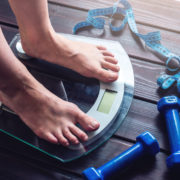The “Diet” Dilemma- Part 1
How do you know what diet is best for you?
Why does it have to be so confusing?
Personally, I hate the word “diet” and rarely use it with my clients. I prefer to call it an “eating plan” or “nutrition plan.” My reason is that “diet” suggests a temporary way of eating. While this can be appropriate at times, generally, people benefit most from lifestyle and behavior changes that last rather than a temporary fix which often leads them back to where they started… or even worse off.
Although there are countless plans out there, I will discuss 4 of the more popular ones right now. Many of these diets have general guide lines as well as extremes and modifications. Here I will be providing an overview of each.
PALEO: Also known as the Paleolithic or “Caveman” Diet. Foods that are allowed on this plan include meat, fish, eggs fruits, nuts, seeds, and vegetables that were available to our hunter-gather ancestors. Foods that are NOT ALLOWED are grains, legumes and dairy. The diet also deters you from drinking alcohol.
A positive aspect of eating this way is that it automatically limits processed foods and added sugars. It is naturally higher in protein and not low-carb. Some studies have shown that Paleo style eating can improve blood sugar control and blood lipid numbers.
KETOGENIC: Commonly known as “Keto” and probably the most talked about diet right now. This one is all about FAT. This plan consists of a very high amount of fat ( 70-80% total daily calories), a moderate amount of protein (no more than 15-20% of total daily calories) and very low amounts of carbohydrates (no more than 5% of
daily calories or fewer than 50 grams per day). The idea behind the protein and carb restriction is that the body will go into a state of “ketosis”, prompting the body to access ketones generated from stored fat as its primary fuel source instead of carbs. The outcome should be a trimmer waistline, fewer energy crashes, and better protection against diabetes. Foods that are encouraged on this plan include cheese, avocados, coconut oil, egg yolks, fatty nuts, olive oil, and fat-dense meats such as sardines and bacon.
INTERMITTENT FASTING: Not necessarily a “diet”, this involves cycling your eating between periods of restriction and periods of eating as much as you would normally eat. There are several different patterns, but here area few of the more popular ones: 16/8 (fast for 16 hours and eat only during an 8 hour period), 5:2 diet (eat no more than 25% of your normal calorie intake two days out of the week) and Eat Stop Eat method(a full blown 24 hour fast once or twice per week). The theory is that when your body is in a fasted state, metabolism may be altered to improve blood sugar numbers and more energy will be pulled from your fat stores. There are no “off limits” foods on this plan.
PLANT-BASED: The concept of plant-based eating stresses that your diet is centered around foods grown in soil, mainly vegetables, fruits, whole grains, legumes, nuts and seeds. Since meats and dairy are allowed in moderation, this is more flexible than vegetarian or vegan diets. Eating more plants makes it easier to get plenty of fiber, vitamins, minerals and antioxidants. There is also a benefit for the Earth since eating less meat can help in the battle against global warming.
In my opinion, there is no “diet” or eating plan that is right for everyone, no matter how trendy it may seem. When choosing your style of eating, you must be realistic and take into consideration your lifestyle and food preferences.
This is a very basic overview of these 4 popular eating plans. There are certainly PROS and CONS to each. I will discuss these factors in PART 2 of THE DIET DILEMMA.




